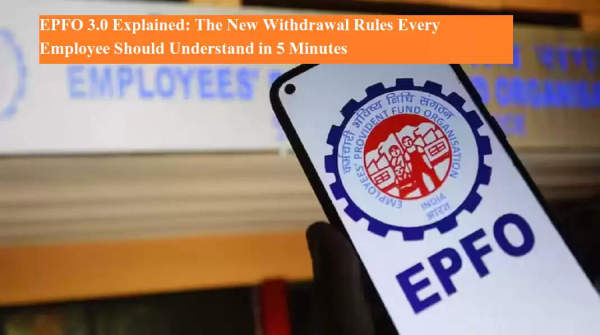
The Employees’ Provident Fund Organisation (EPFO) has introduced major changes under EPFO 3.0, simplifying withdrawal rules for over 30 crore subscribers across India. The new framework replaces the earlier 13 complex conditions with just three simple ones, making it easier for members to access their Provident Fund (PF) savings when needed.
Let’s break down these new withdrawal rules, how they impact you, and why experts believe the move could bring both opportunities and challenges for employees.
1. Members Can Now Withdraw 75% of Their PF Balance
One of the biggest changes in the EPFO 3.0 system is the increase in the withdrawal limit. Under the revised rule, subscribers can now withdraw up to 75% of their total EPF balance, while the remaining 25% must be retained in the account.
This update aims to give employees more liquidity in times of need while ensuring that a part of their savings remains secure for the future.
Experts say this change could particularly benefit those facing financial emergencies, as it allows greater flexibility compared to the previous withdrawal structure.
2. Service Period Requirement Reduced to 12 Months
Previously, different withdrawal purposes — like marriage, home purchase, or education — required different service durations. Now, the minimum service period has been standardized to just 12 months.
That means any employee who has completed one year of continuous service can now apply for withdrawal, regardless of the reason. This simplification removes much of the earlier confusion and red tape that often delayed the process.
3. Three Broad Conditions for Withdrawal
EPFO has now categorized withdrawal purposes into three simple categories:
-
Essential Needs
-
Housing Needs
-
Special Circumstances
The “Special Circumstances” clause is the most significant update. Under this, subscribers can withdraw money without stating any specific reason or submitting supporting documents. This move will drastically reduce the paperwork burden for members and speed up the entire process.
4. Higher Withdrawal Limits for Education and Marriage
EPFO has also increased the limits for specific personal needs. Members can now withdraw up to 10 times their basic salary for education expenses and 5 times their salary for marriage-related costs.
Earlier, employees were restricted to only three withdrawals under such categories. The expansion reflects rising costs in education and social functions, ensuring that members can manage such major expenses without resorting to high-interest loans.
5. Revised Timeline for PF Settlement
Another major change under EPFO 3.0 concerns PF settlement timelines. Earlier, employees could apply for settlement just two months after leaving a job. Now, the waiting period has been extended to 12 months.
For pension withdrawal, the window has been extended even further — employees can apply only after 36 months.
According to financial experts, this adjustment aims to promote long-term financial stability by discouraging early withdrawals. However, it could create difficulties for workers who lose their jobs and need quick access to funds.
6. Impact on Laid-Off Employees
While these rules improve the structure and transparency of EPF management, they might pose challenges for employees facing layoffs. With rising layoffs in sectors like IT, manufacturing, and startups, waiting 12 months for settlement could strain the finances of those who rely heavily on their PF corpus during unemployment.
Experts suggest that EPFO may need to introduce special provisions for retrenched or unemployed workers to balance financial security with accessibility.
7. Faster and Paperless Withdrawals
The new EPFO 3.0 framework is designed for faster digital processing. With simplified eligibility conditions and fewer documents required, the withdrawal amount will now be credited to the subscriber’s bank account more quickly.
This is expected to improve user experience, reduce delays, and minimize manual errors — a long-standing concern among employees.
Final Takeaway
The EPFO 3.0 reforms mark a significant shift toward modernization, convenience, and transparency. The ability to withdraw 75% of your PF balance, simplified rules, and digital-first processing make the system far more accessible.
However, the extended settlement timeline and stricter pension withdrawal rules could pose short-term difficulties for laid-off employees.
Overall, EPFO 3.0 represents a balanced approach — empowering subscribers with flexibility while safeguarding their long-term savings.
-
Horoscope Today for LEO, 2nd December 2025: Lead with Heart & Clearheaded Energy

-
Horoscope Today for VIRGO, 2nd December 2025: Analytical Clarity, Inner Strength & Steady Progress

-
Horoscope Today for LIBRA, 2nd December 2025: Emotional Honesty Meets Purposeful Progress

-
Horoscope Today for SCORPIO, 2nd December 2025: Turn Intensity into Intentional Power

-
Horoscope Today for SAGITTARIUS, 2nd December 2025: Ignite Drive and Align Purpose
